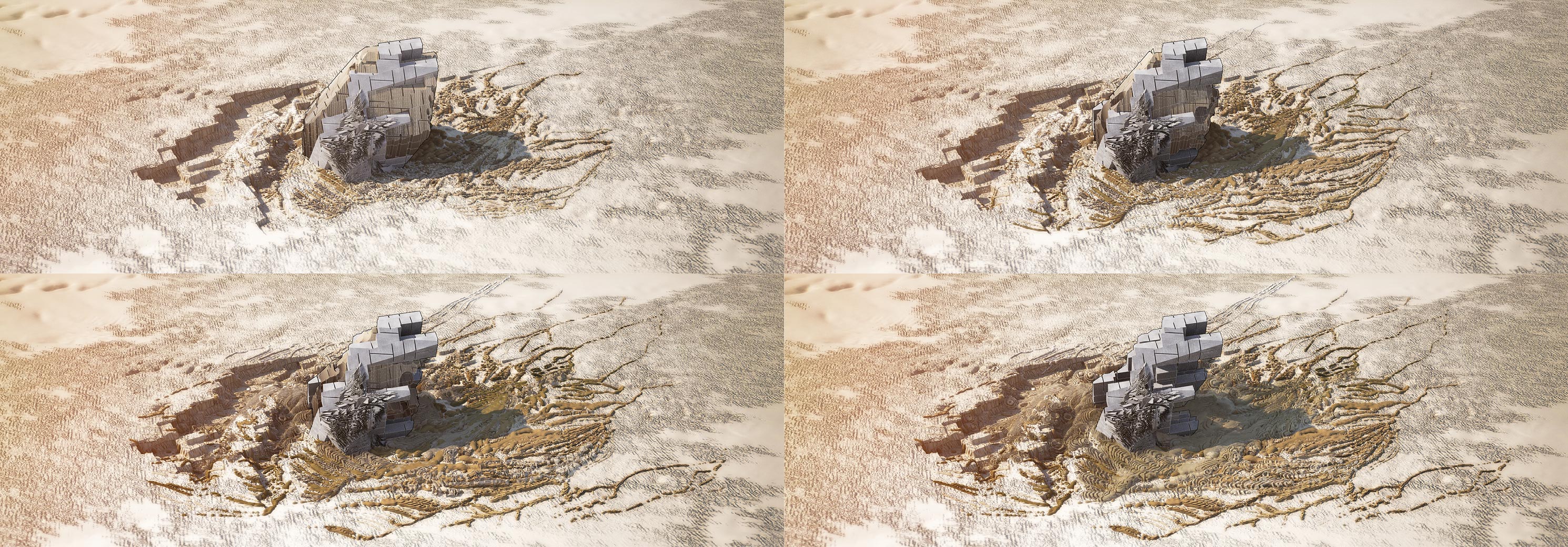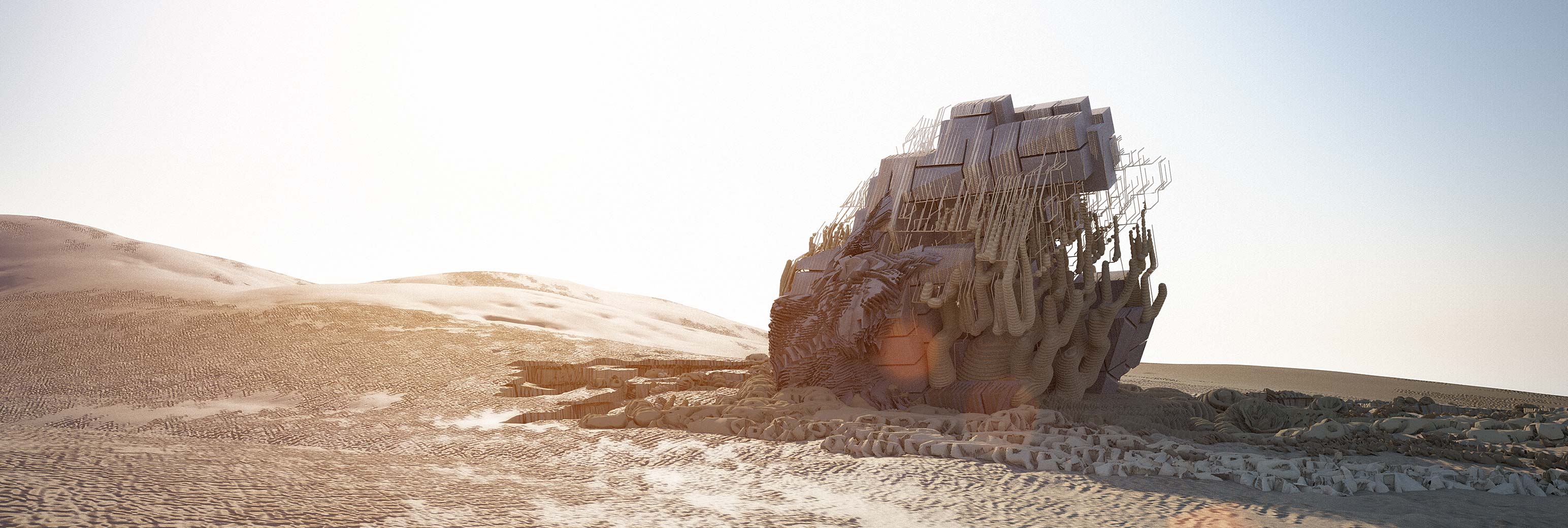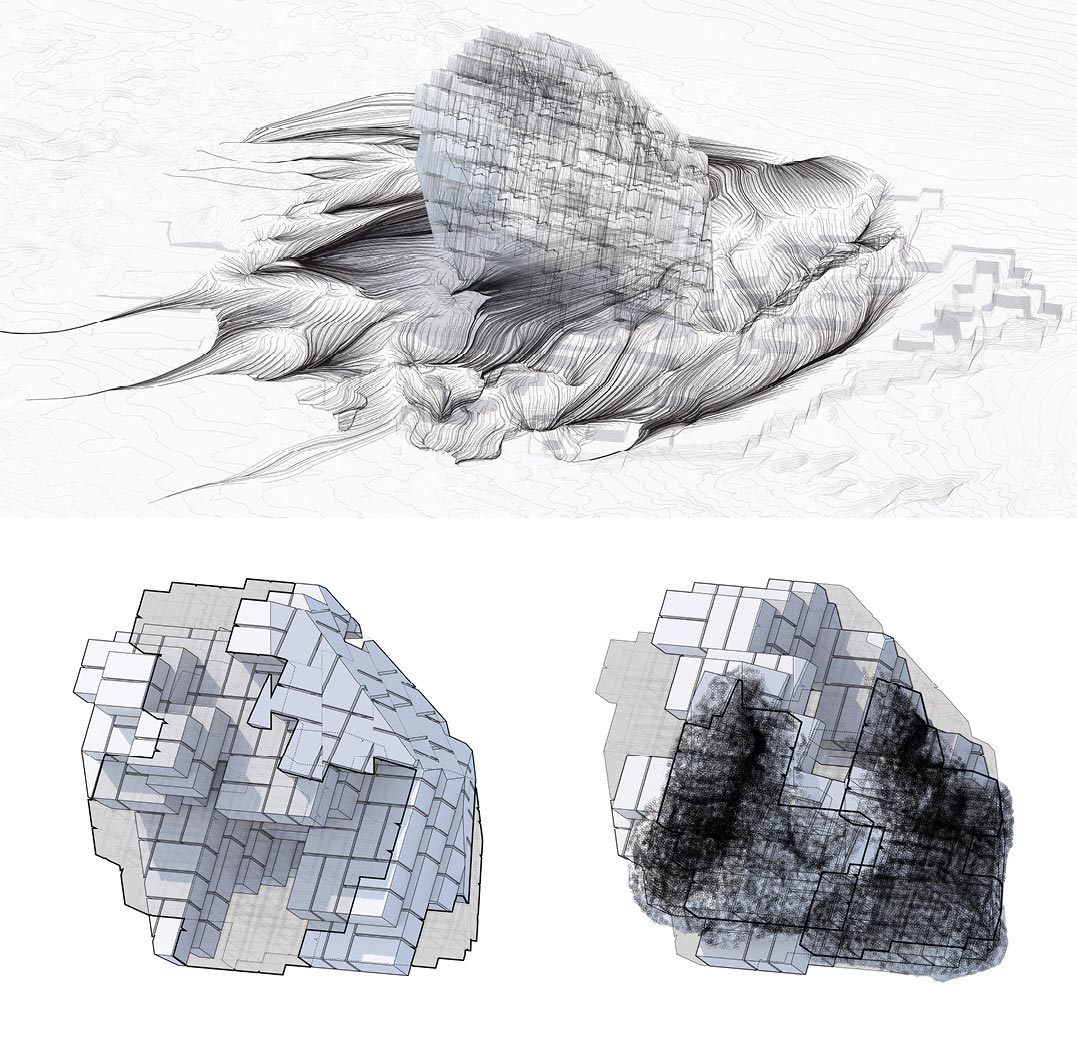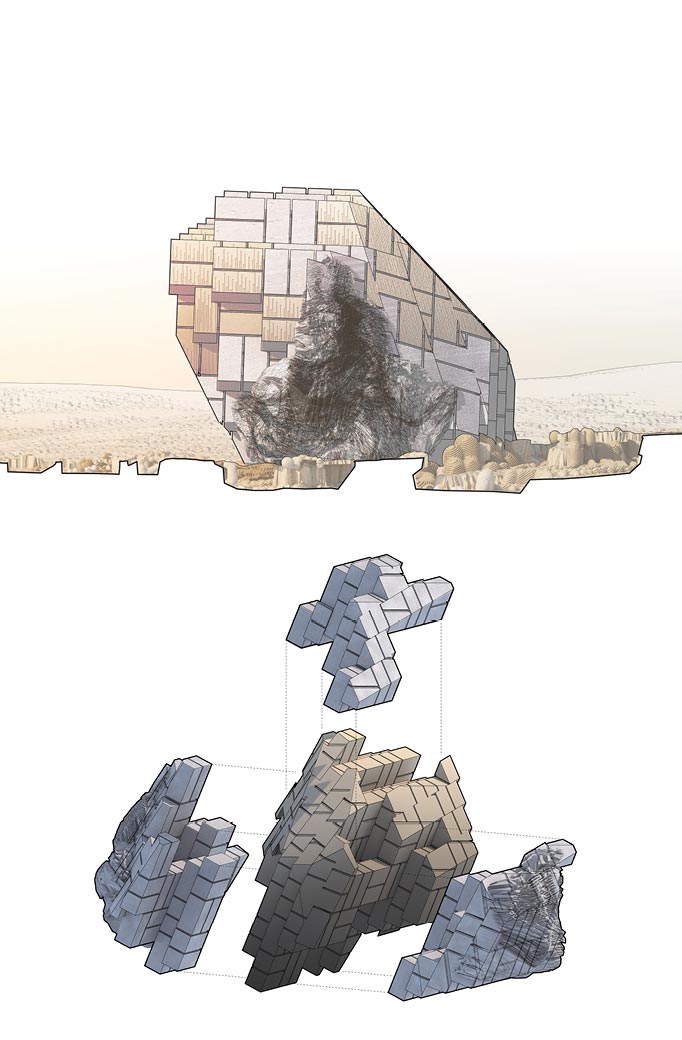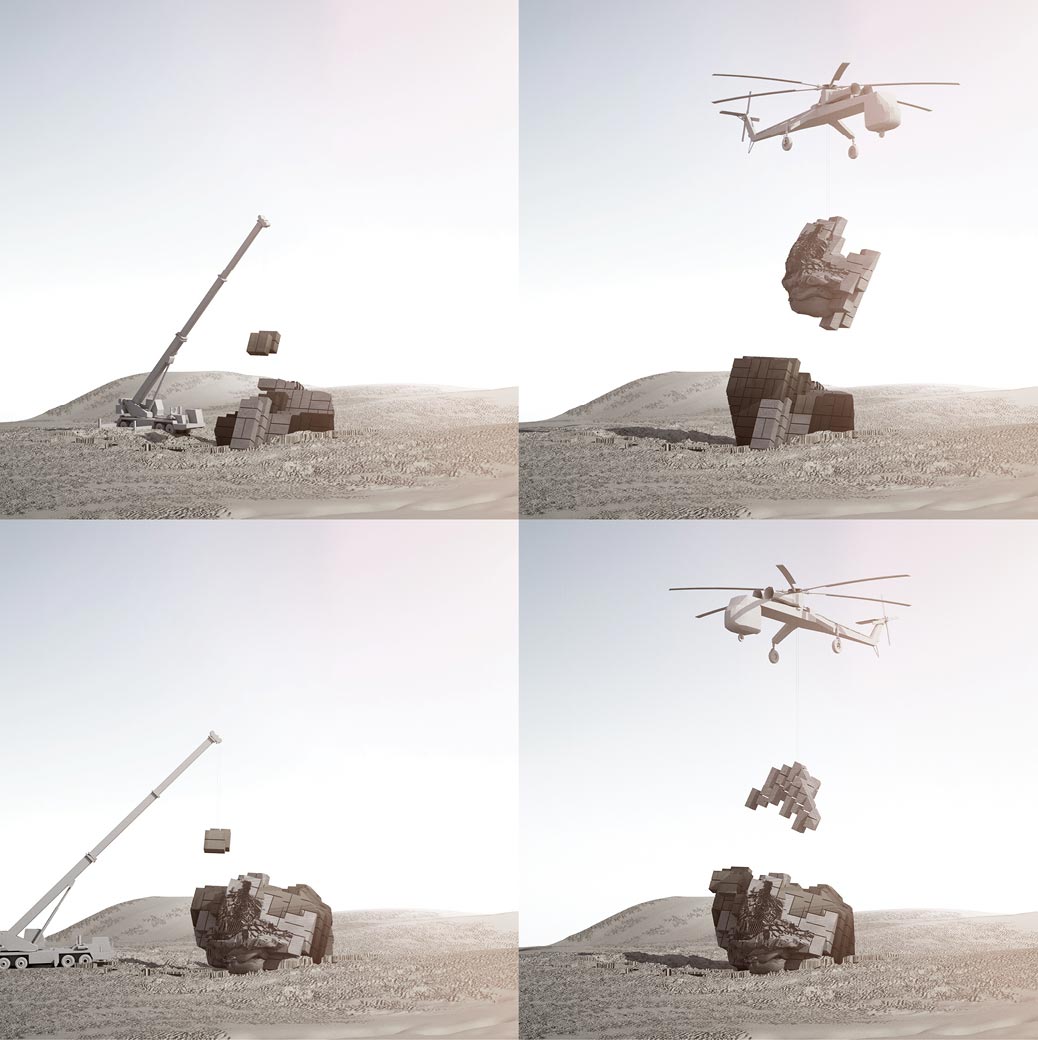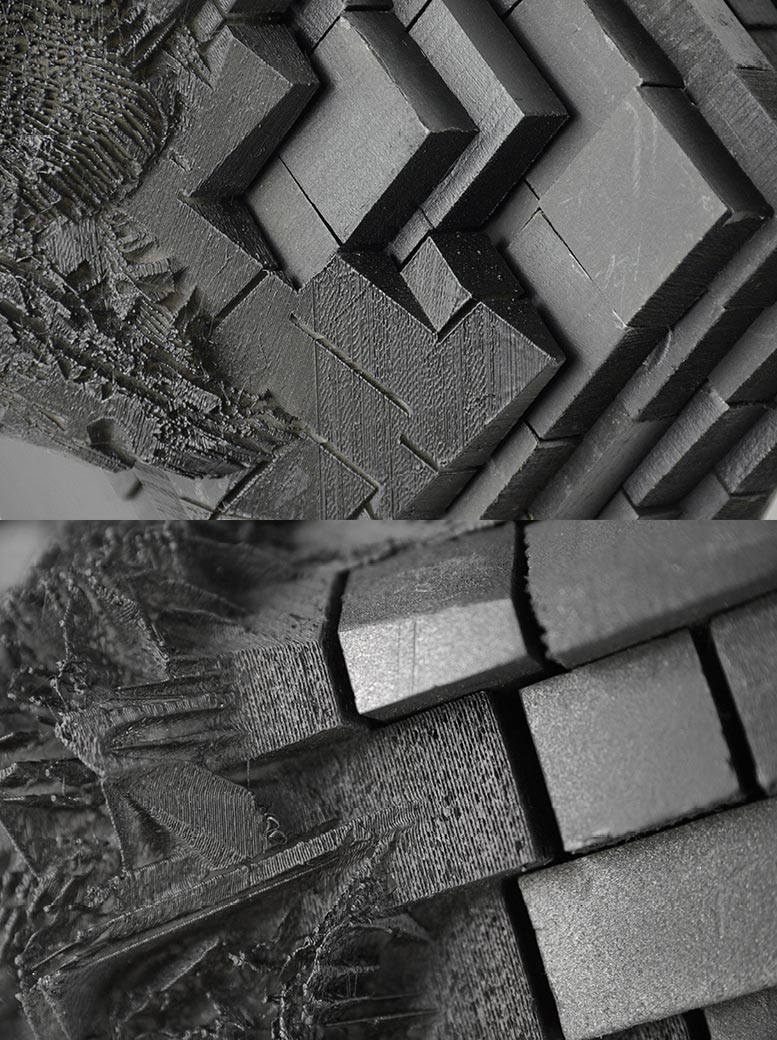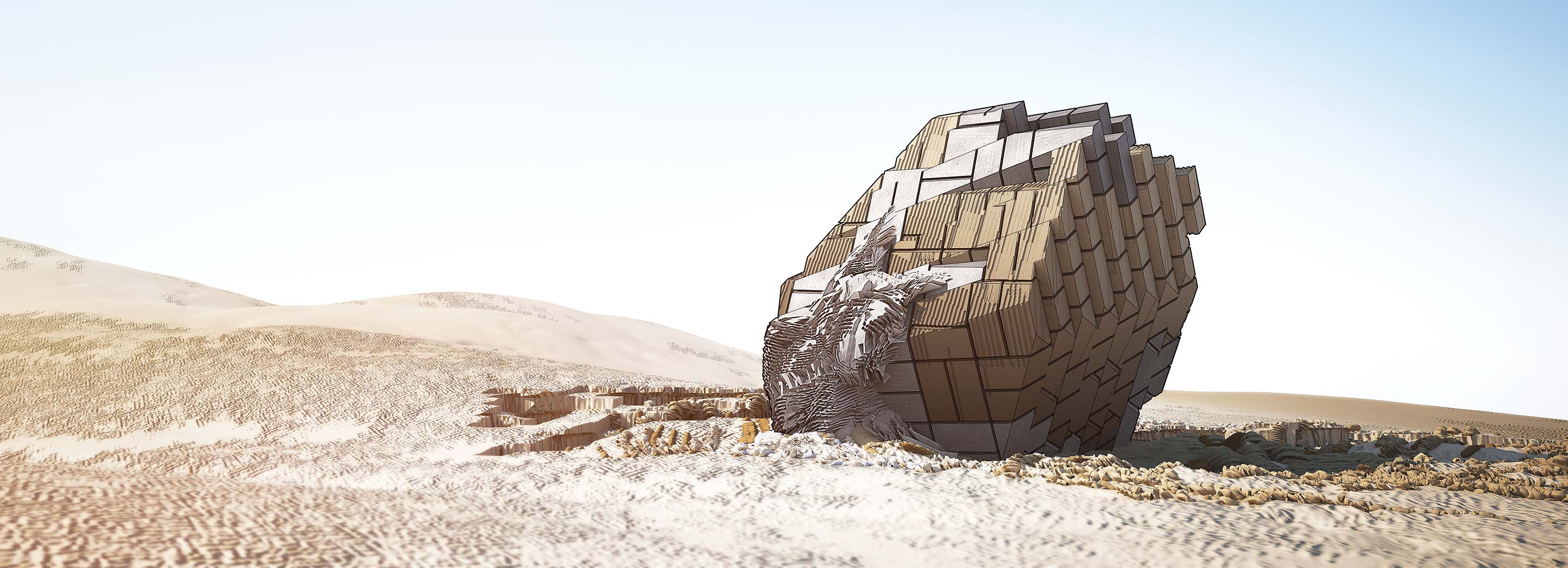GEOMORPHIC AGGREGATES
SYNTHETIC HYBRID GEOLOGIES
Type: Design Research
Location: Mojave Desert, Nevada, USA
Duration: May - July 2015
Synthetic Hybrid Geologies:
As we enter the Anthropocene we are confronted with the shear magnitude of our disruptive influence. We face the dawn of a geological epoch in which the extended human phenotype is so dominant that its systems not only affect virtually all other systems but the geological record of earth itself. Excessive human agency has taken on planetary proportions spawning a hybrid geology that lies somewhere between man made and geomorphologically made. The world can no longer be compartmentalized into the natural and the unnatural, not because we have somehow run out of nature but because nature does not exist. As we bid farewell to the Holocene, we see that our systems are not set apart from other systems through some privileged anthropocentric right.
In response, this project explores the potential for productive human impact through the convergence of the intentionally manufactured and geological phenomena. It is a non-correlationist architecture that contests traditional notions of an architecture framed by anthropocentric utility. It proposes a hybrid geology formed by both anthropocentric and geomorphic activity. It is a landform building that records geological changes over time using the structure itself as a diagram of forces.
Project Description:
The project, located in the Mojave desert, is a geochemical intensifier and research structure that physically alters and changes local geomorphological processes. It takes form as an erratic block or bolder that acts as an engine for these processes. Made in part from local solidified sand, the structure is affected by forces such as erosion and changes in phase, humidity and temperature. The combination of the articulations and crevices formed by the stacking logic of the structure's composition and the hygroscopic properties of the mineral rich sand create micro-climates and natural cycles that encourage bacterial and fungal growth – a sort of biological soil crust which is essential to the desert ecology. This process is accelerated through the slow distribution of water and other deposits from the sand blocks to the concrete key block which has articulations that store and distribute moisture into the ground encouraging soil crust to form more quickly over time.
The project has evolved from stacking blocks with robot arms in different configurations. The blocks were precisely distributed to create gaps and crevices between the blocks that were later cut to expose inherent geometric patterns. The process of stacking was brought further by creating a stacking construction order where blocks are lifted into a concrete structure locking the blocks in place.

